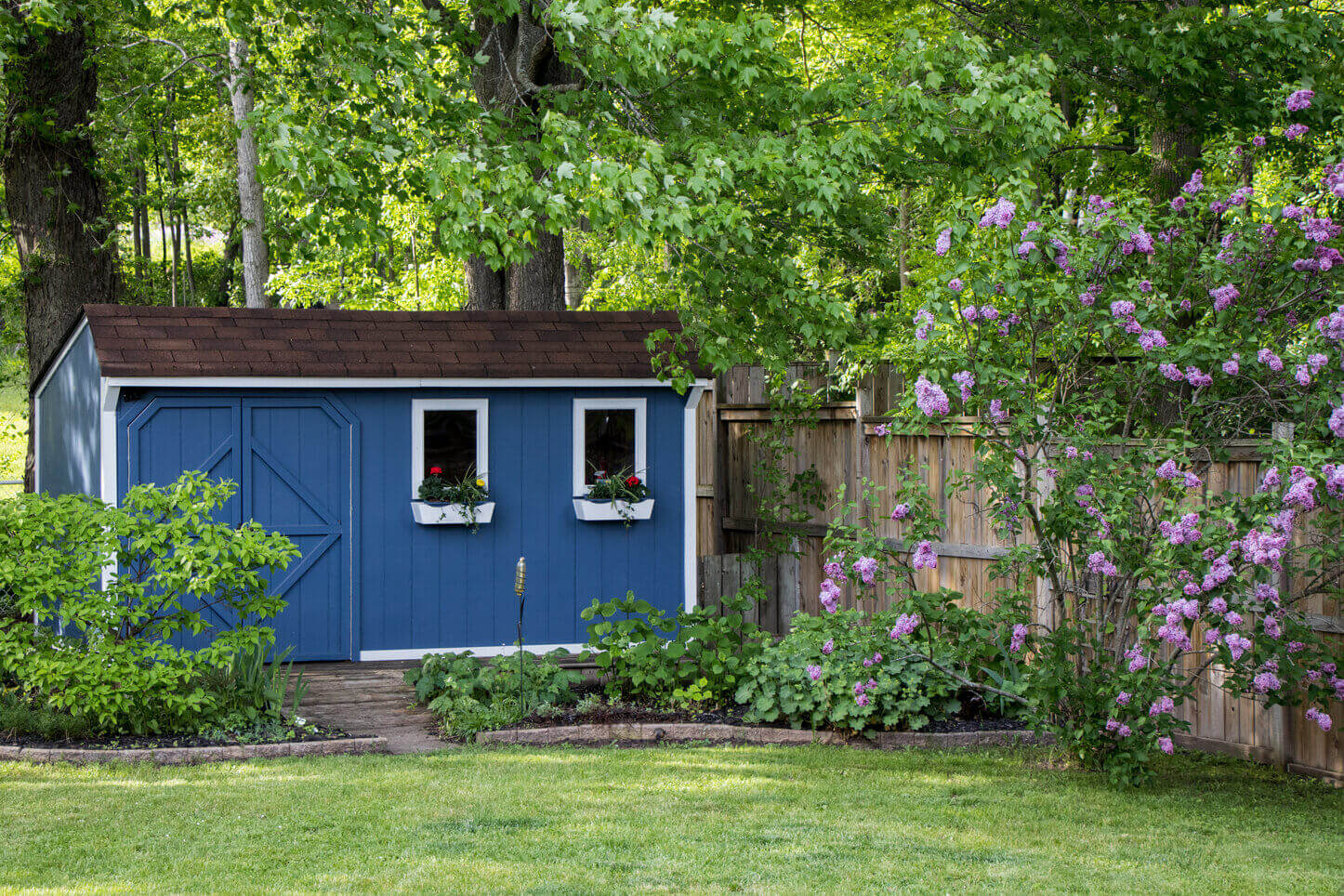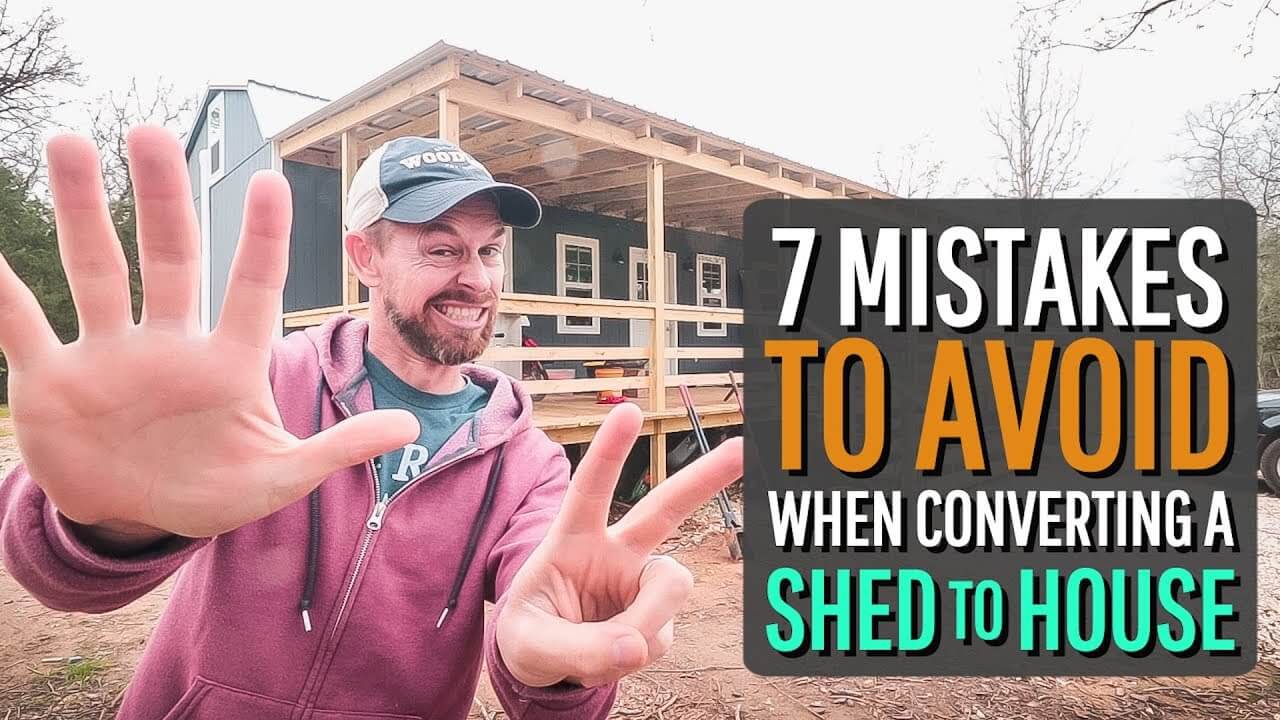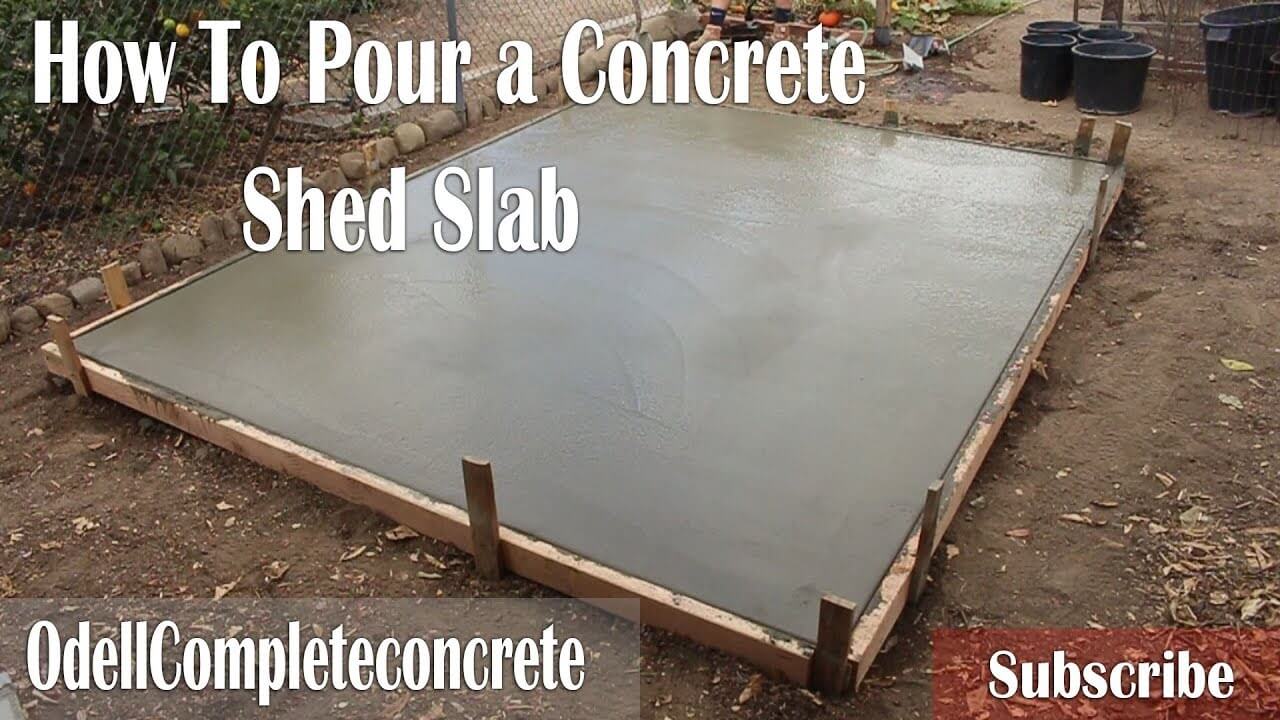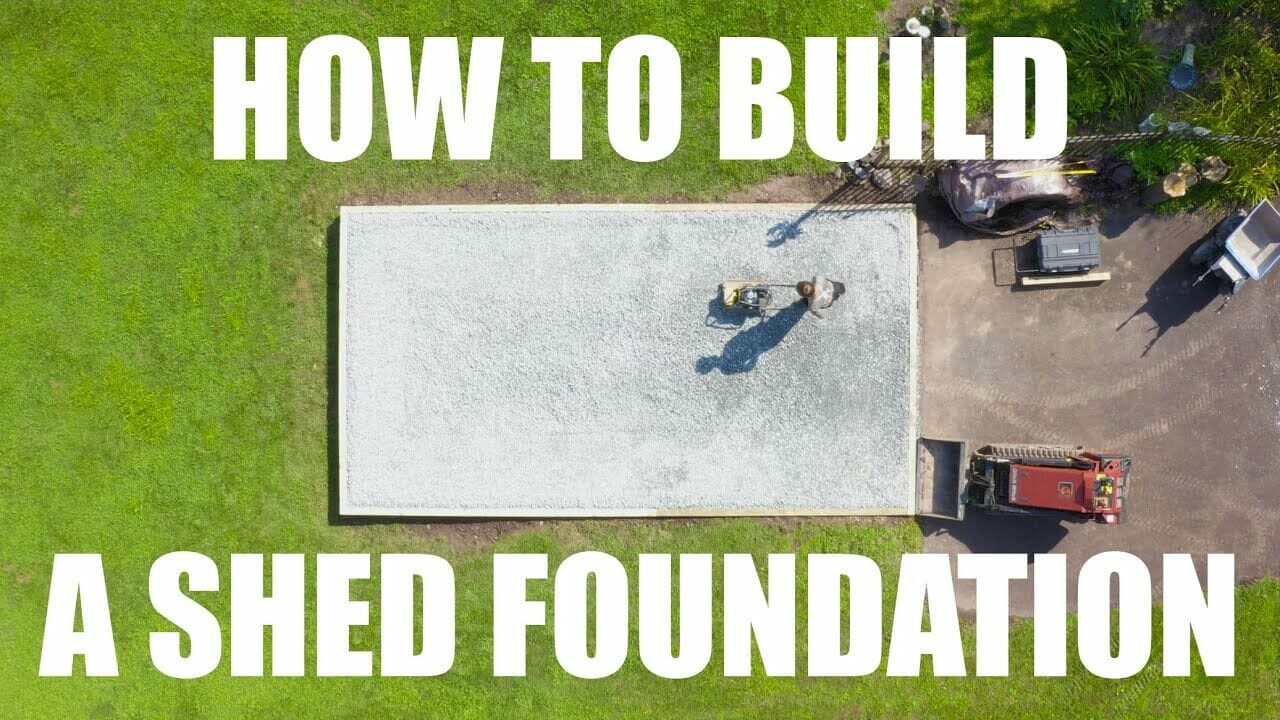Can You Put Garden Shed On Grass?
If you are like me, you want to keep your yard and garden in good condition, which means your shed needs to be maintained.
The question I had when I put my garden shed in my yard a few months ago was if I needed a base for my shed.
I wanted my shed to last as long as possible and keep it in good condition, so I wondered if I could put the shed directly on the grass?
Experts all agree that putting a shed directly on the grass is not a good idea. Depending on the material the shed is made from (wood, metal, or plastic), the shed will be exposed to the elements and thus be affected by the moisture the ground and grass retain and will get damaged after a few years.
I needed my shed to look good in my yard, protect my outdoor equipment and be easy to maintain, but would that be the case if I put it directly on the grass?
I had no idea, so I contacted a contractor to find more information. I wanted to share what I learned in this post.
Can You Put Garden Shed On Grass?
While some people put their garden shed directly on the grass, most experts and manufacturers agree that you should never put a garden shed on grass.
Garden sheds are typically made from wood, metal, or plastic.
Regardless of which one of the materials your shed is made of, the shed will incur damage if you put it directly on the grass. Here is why you should always put your shed on a base and never directly on the grass.
The Ground Will Shift
The ground becomes slippery mud when it’s wet; this is a major concern if your shed is directly on the ground. The weight of the shed will press down on the ground, which is ok if as long as the weather is good.
Soil that is not compacted before you put your shed on will shift even before the first rain comes around. The air pockets beneath the grass will give way under the weight of the shed, causing it to lean. As time goes on, the rain will also damage your shed.
When it rains, the air pockets in the soil are filled with water that mixes with the soil and creates mud. The mud then shifts and slides with the pressure of the shed on top of it, and it gives way under the shed. It will cause the shed to sink into the mud and soil.
The Shed Will Deteriorate
If your shed is made from wood or metal, leaving your shed exposed directly to the ground is a bad idea. The bottom of the shed will constantly be exposed to moisture. Ground and grass retain moisture as they need as much water as possible.
So that, combined with the added weight of the shed, will leave the bottom of the shed wet most of the time. How will this affect the different types of sheds?
Plastic Sheds
It’s not so bad if you have a plastic shed because plastic is waterproof, but you will have issues with wooden and metal sheds. Plastic sheds are more susceptible to damage from sinking and the sun than moisture.
The weight will cause the ground to shift, and the plastic shed to sink; this might damage the structural integrity of the shed. The sun will weaken the outer shell of the plastic that will start to crack and become brittle when exposed to rain, but this takes a few years.
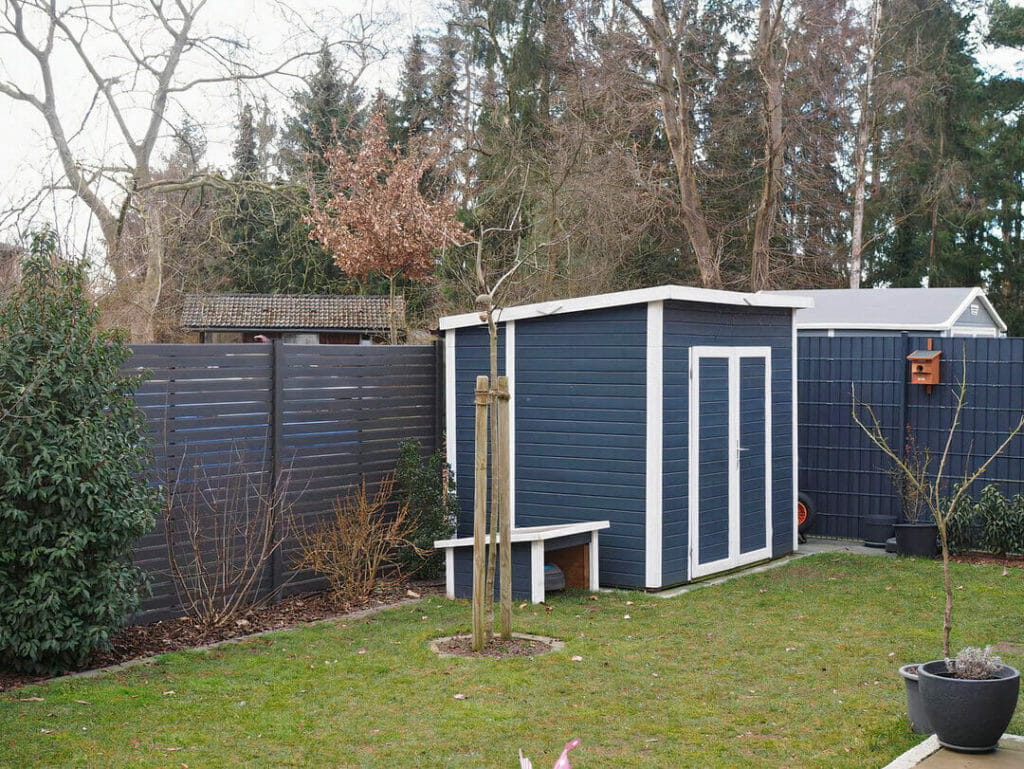
Wooden Sheds
Wooden sheds are usually made from pressure-treated wood. Pressure-treated wood lasts longer than normal wood as it has added pesticides to keep wood-eating bugs at bay and helps protect the wood from exposure to moisture, mold, and rot.
It sounds like a dream material, but this only works if the wood is not constantly exposed to wet conditions.
With time, the wood will begin to get moldy and rot. The wet conditions will also cause the wood to expand and warp, leaving you with a shed that looks more like the leaning tower of Pisa than the garden shed it was intended to be.
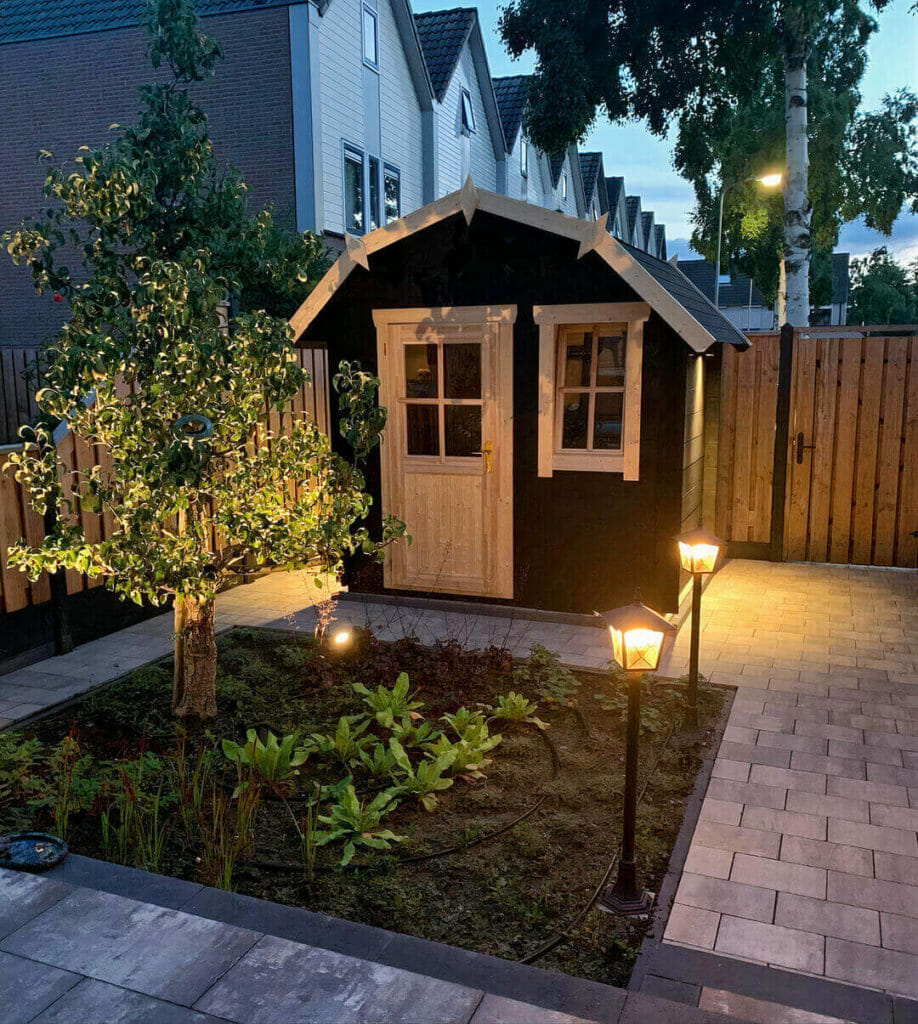
Metal Sheds
If you have a metal shed, the bottom of the shed is at risk of rusting. The constant moisture will cause the metal to rust over time. The rust will corrode the metal, and pieces will eventually break off.
That, in turn, will cause the shed to lean, shift and compromise its structural integrity of the shed.
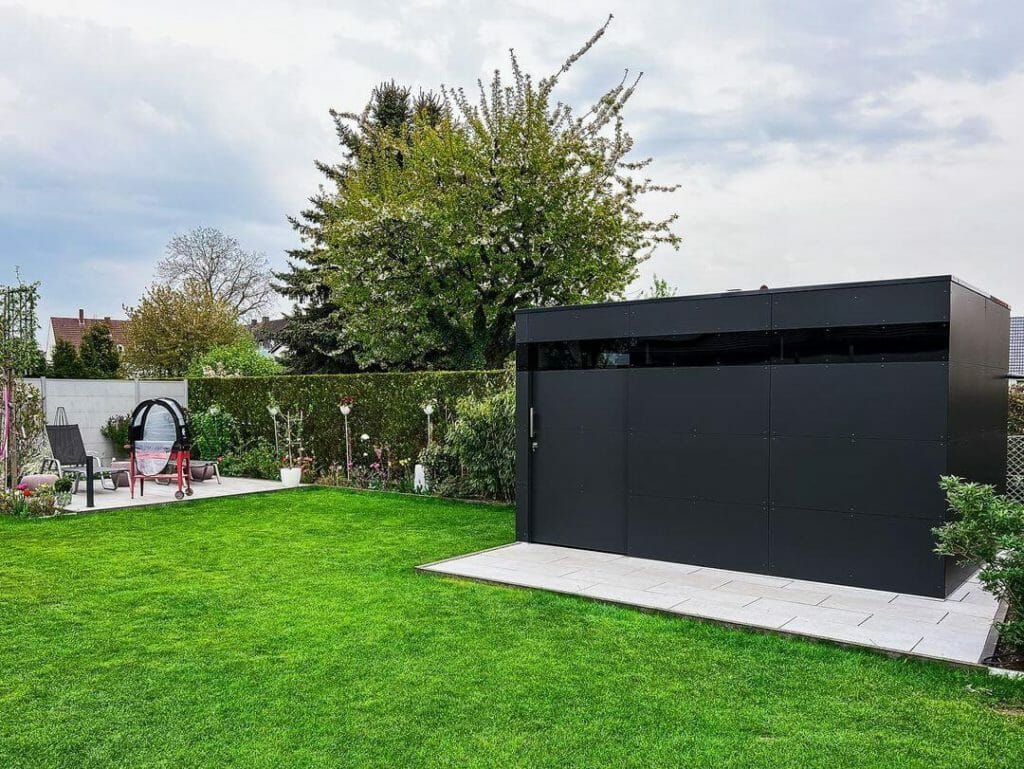
What You Keep Inside The Shed Will Be Affected
When you put your shed on grass, it will deteriorate, but what about the equipment or things you store in the shed?
If you have a wooden or metal shed, the constant exposure to moisture will create the perfect breeding ground for mildew and mold. If you have camping and outdoor equipment in your shed, mold can grow on the surfaces of the exposed equipment.
If this should happen, it will be very costly to replace as some types of mold, like black mold, is dangerous and a health hazard, and you should throw away anything that has black mold on it.
If you have gardening equipment, the metal parts like the shovels and metal rakes will rust and erode with time.
The same goes for outdoor equipment like BBQs. If you have a BBQ and metal utensils stored in the shed, the paint might start to chip and peel and rust.
It Will Ruin Your Lawn
Putting a garden shed on the grass without a base will ruin the ground and grass underneath it. When you lay down a base, you compact the ground; this helps keep the ground underneath the shed stable and protected as it spreads out the weight of the shed.
When there is no base, the shed will move with the ground, and the weight load will bear down on one spot, thus leaving the shed to sink, which will lower the quality of your soil and grass.
What Kind Of Base Can You Put A Shed On?
When you need to lay down a base for your garden shed, you first need to decide what kind of base you want for your garden shed.
There are a few options that might be just what you are looking for.
Traditional Concrete Base
Most people stick to the traditional shed base consisting of a sub-base (gravel and sand) and concrete.
This is because concrete is solid, stable, durable, and absorbs moisture. Traditional concrete bases have a DPM (damp-proof membrane) between the sub-base and the concrete.
It acts as a moisture barrier, so even if it rains, the concrete won’t stay wet; it will distribute the wetness to the entire concrete base and draw the moisture to the bottom of the base, where it dries completely.
The concrete also adds structural integrity to the shed, so your shed will have a level base to stand on; it won’t lean or sway to one side but remain intact and straight.
Because the concrete is solid and you compact the ground before pouring the concrete, the concrete base won’t shift the soil as much as the uncompacted ground will shift under the weight of the shed.
So even if there is a rainstorm, the concrete base will keep its stability.
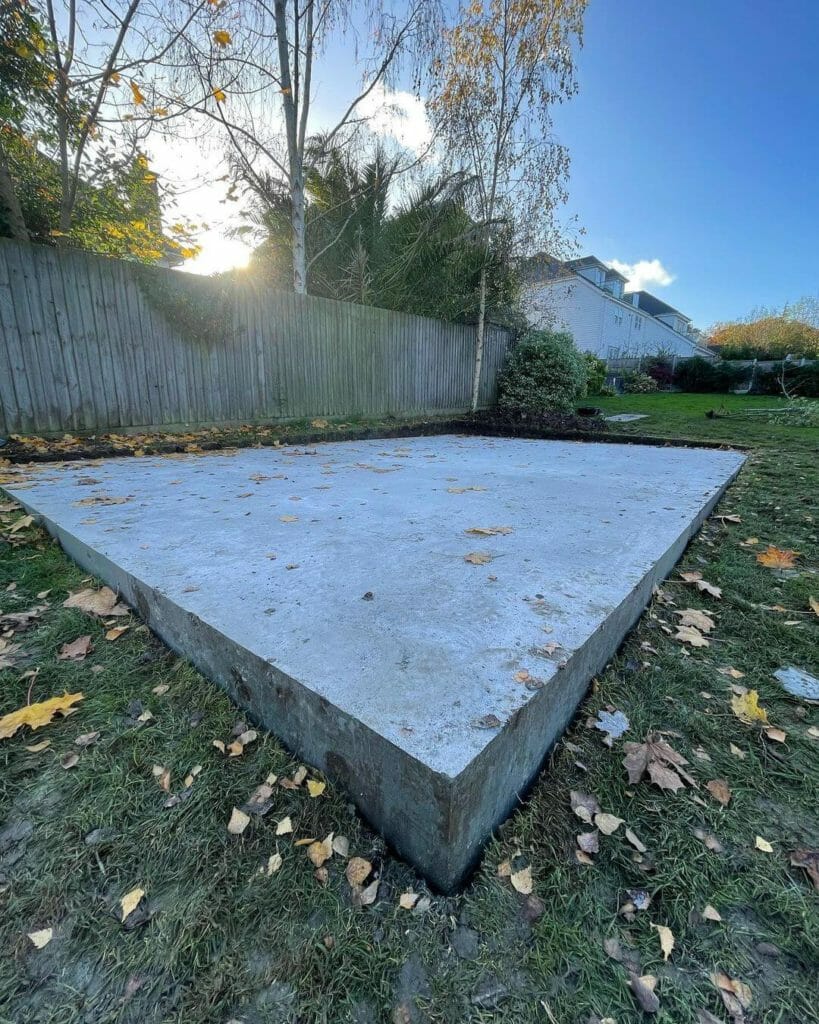
Gravel Shed Base
Many people choose to use gravel as a base for their shed as it is more cost-effective and easier to lay down than using concrete.
You need to add a layer of landscape fabric before putting the gravel down to keep the weeds at bay. Gravel bases are becoming more popular as they allow for better drainage and look more stylish than concrete or paving slabs.
Preparing the ground for gravel is not as labor-intensive as other shed bases, but there can be maintenance involved as time goes by to remove weeds and replace any of the barrier beams that might have started to deteriorate.
Remember, the landscape fabric you use should be porous and not too thick, or the water will collect on it, and it can damage your shed.
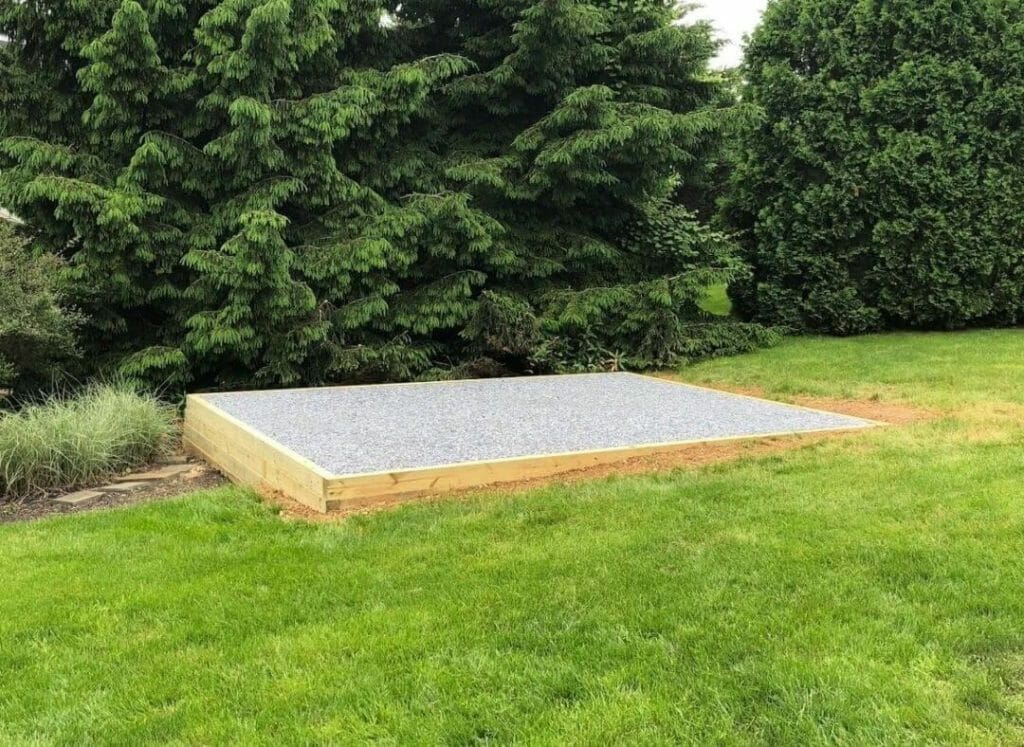
Concrete Paving Slabs
Another great option to use as a shed base is concrete paving slabs. Concrete paving slabs are less expensive than hiring a concrete mixer, and it will be ready to put your shed down sooner.
You follow the same steps that you would when laying a concrete foundation:
After the sub-base, it’s time to lay your paving slabs. Remember never to lay down a plastic sheet or DPM when using concrete paving slabs as a base for your shed.
The gaps between the slabs along with the gravel sub-base provide adequate drainage.
If you add plastic sheeting or a DPM to the underside of the paving slabs, you will have weed problems, and the concrete paving slabs will move. So only add the mortar mix to each concrete paving slab, and you will have a perfect shed base in no time.
Mistakes You Should Avoid Before Laying Down A Shed Base
Before bringing a garden shed into your yard, you need to prepare the ground. Here are a couple of problems you need to keep in mind before you start.
These building and assembly strategies need to be carefully considered beforehand to avoid making costly and time-consuming mistakes when you are preparing the ground for your shed.
Picking The Right Spot
When picking a spot for your prebuilt or custom-built shed, you need to know what the building codes are where you stay concerning sheds.
Some areas state that you need to put your shed a few feet away from any property line and others have extra rules you should abide by when preparing the ground for a shed.
It might sound like tons of work, but these rules and building codes help you avoid utility lines, plumbing pipes, and other hazards that will damage your shed. It also helps you avoid costly repairs if you strike a power or plumbing line.
You can get all the information you need to avoid this at your local zoning office. If you live in a home that is part of a homeowners association, you can contact them to get the relevant information.
Putting Your Shed On Low Lying-Ground
When your property sits on low-lying ground, you must carefully consider where to put your shed. The low-lying ground will retain rainwater because it doesn’t drain properly.
You should look for a spot that is higher up and has proper drainage, or your shed will flood when there is a rainstorm.
If you don’t have places higher up that are flat, you can choose a spot that has a sloped side. It will drain better that way, and you can be sure your shed and the equipment you store in it will stay dry.
Not Leveling Or Compacting Your Base Properly
The quickest way to cause problems with your shed base is not compacting and leveling the ground, you are putting your shed on.
Even after pouring concrete or laying down slabs, the ground underneath the base can and will shift if it is not compacted and leveled out.
The ground has air pockets, and these air pockets will fill with water and sink when it rains. As the rainwater dries up, there will be a gap between the shed base and the ground. The weight of the base and shed will cause the sub-base (gravel and sand) to sink into the gap.
This will cause the base to become less stable, and the shed will shift and lean. Sheds are not designed to lean, so they will start to pull apart. Eventually, it will collapse if the base is not fixed.
Installing Concrete Slabs Incorrectly
As stated above, many people use concrete slabs or blocks underneath their shed as a base.
Some experts don’t recommend using concrete slabs as a shed base. If you are going to make an informed decision on the correct base for your shed, you need to have as much information as possible.
When putting the shed on concrete slabs means that the slabs will settle eventually. If the ground is not prepared or compacted properly, the concrete slabs will settle unevenly. It will cause your shed to lean, and the doors and windows might get stuck.
If you are unsure whether to use concrete slabs as a base for your shed, you can contact a contractor to get more information.
Not Leaving Enough Space At The Sides Of Your Shed
When you are laying the base of your shed, you need to make sure the base is bigger than the shed. Your shed base needs to be at least 12-inches bigger than the shed on each side. There are a few reasons for this:
- It keeps your shed clean and helps it last longer as it keeps the rainwater from splashing directly onto the side of the shed.
- You can cut the grass around the shed easier. The grass will grow with no gravel or concrete, so when you are trimming the grass, you can scratch or scuff the sides of your shed.
- It protects your shed from too much water accumulating. Grass retains moisture and will grow up the sides of the shed. The moisture in the grass will keep the bottom of the shed wet, damaging the shed over time.
- The last reason the base should be bigger is the distribution of weight. The shed will sink lower if all the weight is on the base and it can’t distribute over a larger area.
Preparing The Base Of The Shed Without Adding Landscape Cloth
When using gravel as a base for your shed, you should remember that the gravel alone won’t be enough to keep the weeds and grass from growing through the gravel.
Landscape fabric is used to block the weeds from growing in flower beds and under the gravel of your shed,
Not Building Framework/Barrier When You Use Gravel As A Base
When you use gravel as a base for your shed, you need to add a frame or barrier to keep the gravel from spreading and sinking into the ground as time goes on.
It could severely affect the stability of your shed base if you forget to add a perimeter.
The Bottom Line
It’s important to know that putting your garden shed directly on a lawn is a bad idea. It will sink and shift and, in the end, lean to one side.
Other damage includes rotting or rusting at the bottom of the shed, which will affect the shed’s structural integrity.
You need to put your shed on a solid and level base that will carry the weight of the shed without settling too much.

